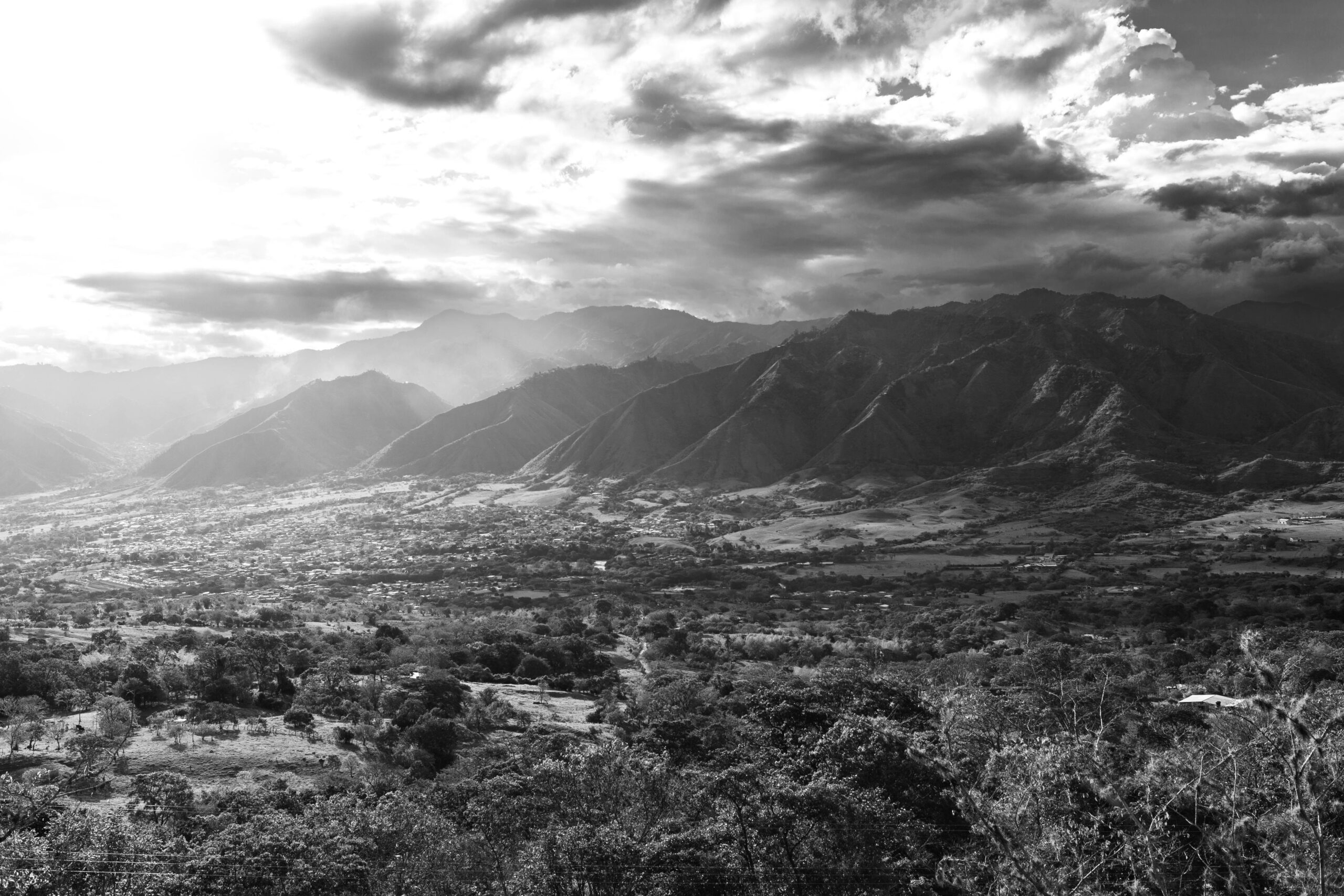If you’ve traveled with Osito in the Colombian countryside, you’ve likely heard your hosts say something about the “security situation” being either compromised or delicate, precarious even. This is a direct translation of words used by Colombian media and government officials when referring to the armed violence, drug-trafficking, and resulting public insecurity that is an everyday reality for thousands of rural coffee-growing families who live and work in the highly forested Andean and Amazonian regions of the departments of Cauca, Caquetá, Huila, Nariño, Tolima, and the Sierra Nevada of Santa Marta, among other places.
This long-lasting and ongoing conflict started almost a century ago, in the 1930’s, and is rooted in social inequality, land ownership disputes, and left- and right-wing political struggle between the mostly indigenous, rural worker class and the largely white, conservative, landowning elites. In order to understand where we are today–and I say we because if you buy or consume coffee from Colombia you are indirectly affected by this reality–it is important to understand the history and the players involved.
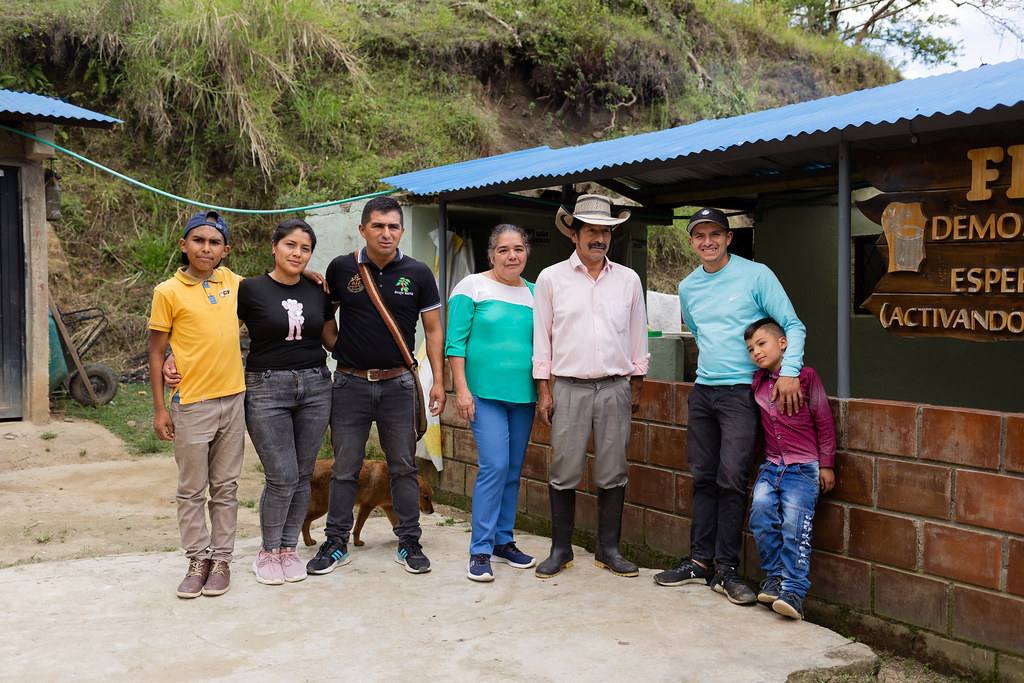
After a period of widespread violence instigated by the assasination of Bogota’s left-wing mayor Jorge Eliecer Gaitan in 1948, several key players emerged in the 1950s as a result of a new power-sharing government system that on paper sounded equitable (the power dynamic would switch back and forth between parties every four years) but which in reality supported a bipartisan regime that really only benefited the upper class, leaving the majority of the population—the landless rural working class—feeling forgotten and voiceless. Due to this exclusion and simmering tension perpetuated by the unequal distribution of land–a few white families owned most of the land and the rural communities worked those lands– armed groups began to emerge in the 1960s: first the FARC (Revolutionary Armed Forces of Colombia) in 1964, followed by the ELN (National Liberation Army) later the same year.
These groups are what we call left-wing armed guerillas and were founded by smallholders and rural workers whose goal was to make political change via armed resistance. Soon, as a response to the armed and violent guerillas, right-wing paramilitary groups that were privately funded by the wealthy elite landowners were formed, and another era of violence both in the countryside and the cities began. This period was characterized by kidnappings and disappearances, massacres and assassinations, which in turn led to mass internal displacement throughout Colombia. The paramilitaries worked closely with the Colombian military and government, and eventually with the groups moving the drugs. Several drug cartels— dealing in poppies, then coca and now cannabis and coca–also came into play, working with the guerillas, the paras and the government. The paras and military were also supported by the US government in the form of military aid. Peace treaties started in 2002 with the election of Álvaro Uribe and continue till today. In 2016, a treaty was signed with the FARC, which many say resulted in the creation of smaller splinter groups, who are still active in places like Huila.
So, how does this multifaceted conflict affect coffee production, coffee growers, pickers and all of us who rely on the work of said partners in Colombia today?
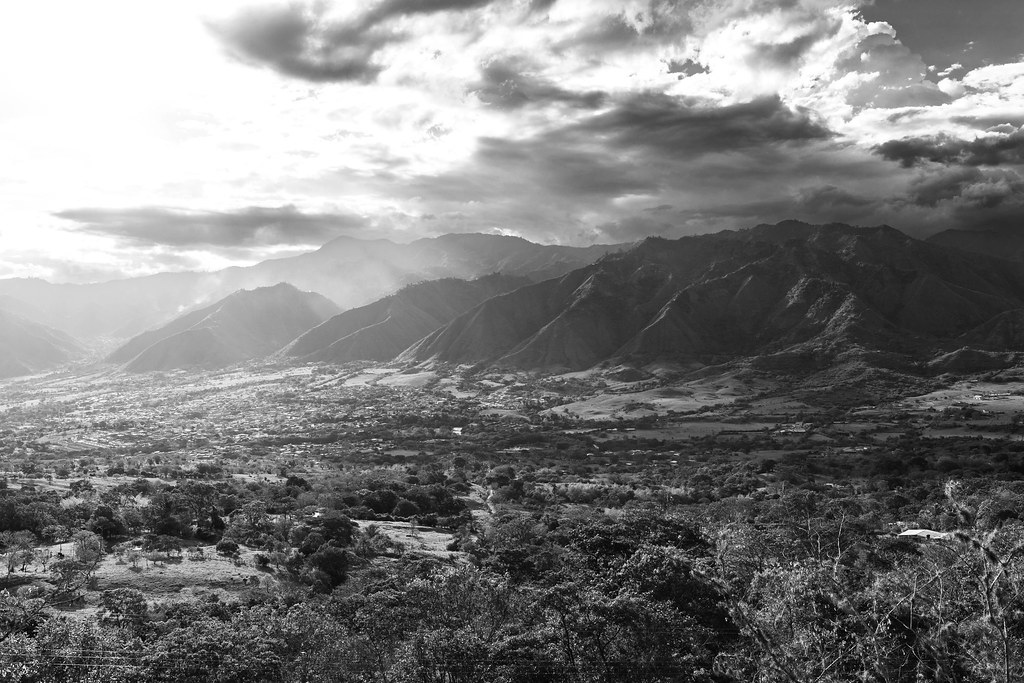
After working for five years in most of these areas, from 2018 to 2023 specifically, and sharing meals and countless conversations over tinto with coffee farmers, their families, neighbors and municipal leaders, I have come to understand that this geopolitical trade conflict intersects with the everyday lived experience of the Colombian coffee farmers. This is why it is inextricably linked to the work we do. It should be said that similar conflicts exist in other coffee-growing nations and that each is deeply tied to regional and historical context singular to each community and perhaps only fully understood by those who have lived it for decades and who continue to deal with it today.
That being said, I am not Colombian and therefore I cannot fully speak to the reality and effects of the armed conflict, so I reached out to Didier Pajoy, a coffee grower from the municipality of La Plata, Huila, who manages Osito’s buying station and new warehouse in his hometown, to better understand the real effects on coffee production, the local economy and everyday life in Huila and what he told me over the course of a two-hour phone call was extremely illuminating.
I wanted to speak with Didier specifically because he has lived his whole life in this reality. La Plata is located in a strategic corridor that connects the neighboring state of Cauca, which is the gateway to the illicit drug trade routes of Ecuador and Perú, as well as other parts of Colombia, like Caquetá to the port of Buenaventura on the Pacific coast. Furthermore, La Plata and the nearby communities of La Argentina and Belén, have seen the sustained presence of both guerillas and paras for several years now, with an uptick in violence since last year. To put it into context, I used to visit La Plata many times a year when I lived and worked in Colombia, but as recently as this past November (2024), La Plata—as well as several other municipalities Osito works in—has seen increased guerilla activity characterized by an informal, plain-clothes regional government that has eyes and ears everywhere, including in every link in the coffee supply chain, from the truck drivers who transport inputs and parchment, to the very pickers who hand-select the cherry. La Plata even had a 18:00 curfew in place during the month-long Christmas celebrations due to the insecurity on the routes connecting these rural communities that grow the coffee we covet and enjoy all over the world.
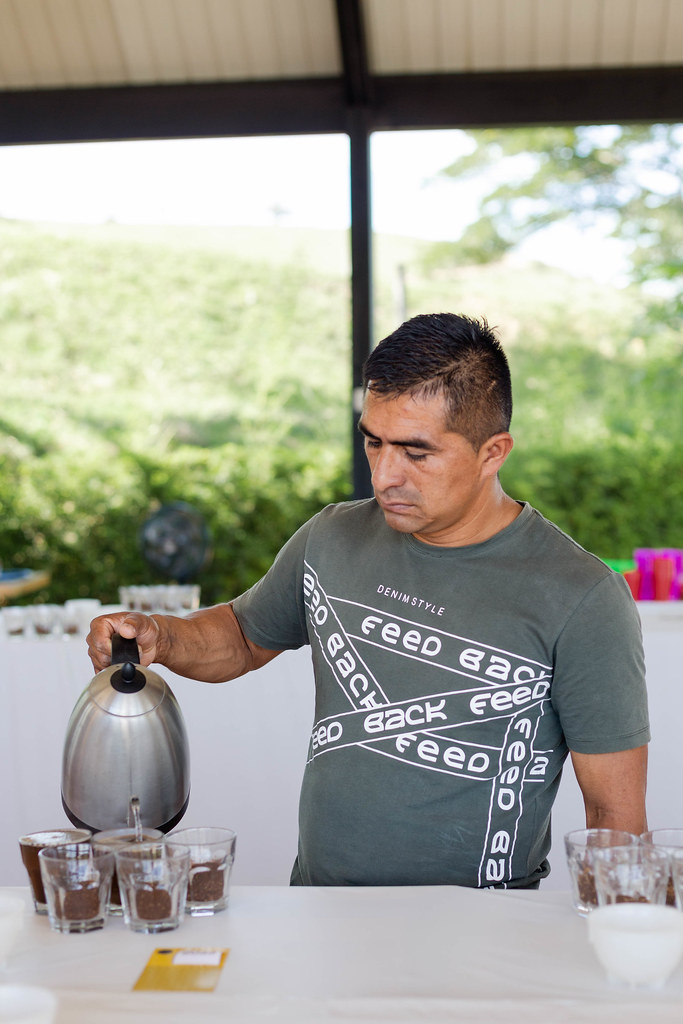
I started our call with a long list of questions that almost immediately went out the window when Didier started explaining why and how these groups work and how they affect his everyday life.
“It’s like a small, illegal government,” Didier began telling me, “and there are many contributing factors that influence what they do and who they do it with. They control everything, all commerce and maintain an almost invisible presence in the veredas and municipal capitals alike. Almost anyone who works in the countryside has to ask for permission and pay dues to the groups. The bigger producers have to pay usually, not the really small ones. And you never know who they are. The groups have changed over time, and the plants that finance these groups have also changed.” For context, as it really is a regional specific designation, a “small” producer can have anywhere from a single plot that is less than half a hectare up to five hectare. A bigger producer will have approximately twenty or more hectares, usually spread across more than one farm.
I asked Didier how this affected the security of rural Huila, since in my privileged experience as a white Latina and extranjera (foreigner) I had never reality felt unsafe in my work travels throughout Huila–sure I had heard the murmurs and rumors but I was ignorant to the reality and how organized it actually was. Basically, Didier calmly explained, to make any movement through these compromised regions with guerilla and paramilitary presence, one had to pay a price to the groups in charge: “Encarece todo lo que llega” it makes everything that moves more expensive, “es un costo adicional para el caficultor,” it’s an added cost of production for the farmer. He went on to give me examples and I am paraphrasing his stories as follows.
If you want to move a tractor mula (the Colombian equivalent of a freight or semi truck) of parchment from La Plata to Garzón for example, you have to pay for permission to traverse the highway that connects these municipalities.
You want to deliver organic fertilizer from a factory in Neiva all the way down to Palestina, you pay your dues and you need a special permit that the secretive groups have to provide you with, which then allows you to move commercial goods through their territories. If you do not have this permit and still make the trip, they will seize your freight or stop the truck and disappear the driver.
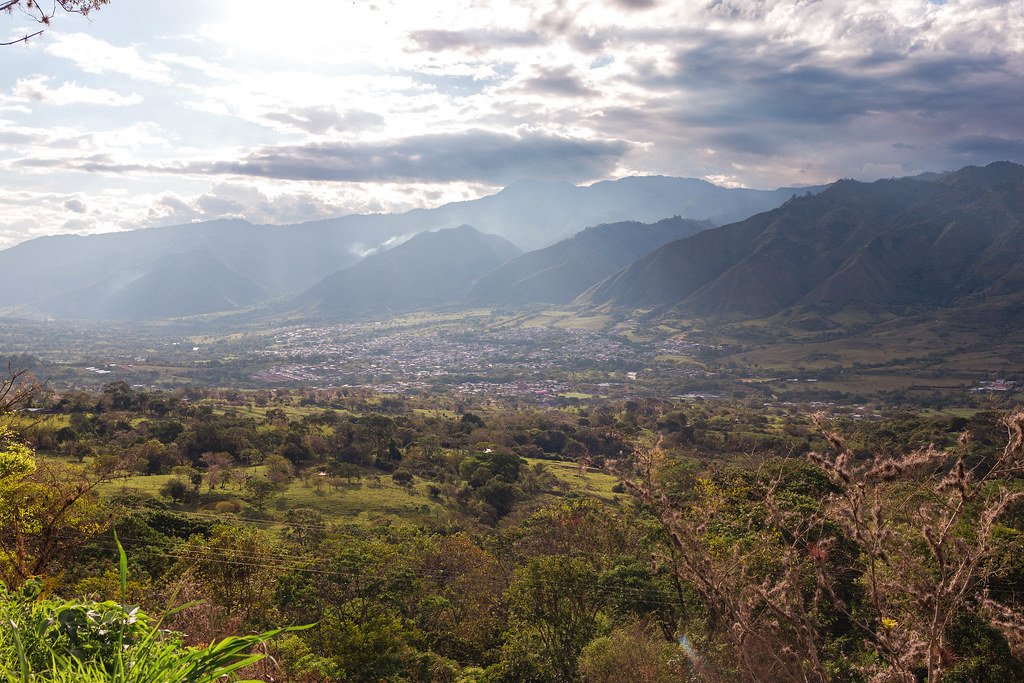
You need ten pickers to carry out the harvest, they must be known to the groups–Didier and other Colombian co-workers often refer to these people simply as ellos –“them” or “the others”—because they cannot have people unknown to them working in their territories.
“Contratan la mano de obra ellos mismos,” they hire their own labor force, and those local and itinerant pickers are not willing to risk their lives, understandably: “A strategy for facilitating relationships is to pay more as well, per kilo even.” If the farmer wants to bring their own labor force, he will pay a price to get unofficial work permits for his pickers, that way they become known to the armed groups present in their area.
I was blown away by what my friend and colleague was saying. On this end of the chain or web or network of supply we talk a lot about costs of production and how that affects prices and the end consumer. But we do not take into account these added costs of production because we are not privy to them and how they work. As we wrapped up our call, Didier expressed to me that he was worried that by telling our clients abroad about this reality, that they would stop buying Colombian coffee. My heart sank, because this isn’t the first time I had heard this from a coffee farmer and because, given the global political climate, I am very aware that racism, xenophobia, and neoliberalism directly contribute to Didier’s and the more than 500,000 Colombian coffee growers’ lived financial and physical insecurity and deep-rooted inequality. Moreover, I do not want to give our clients and friends a reason to buy into the stereotypes of the global South often perpetuated by Northern and Western governments. If anything, I share this knowledge with the hope that it leads us to make more equitable and informed decisions when it comes to buying and selling coffee.
“Working for Osito has helped me develop a different vision,” Didier told me as we said goodbye, and I hope that by sharing his experience with our international audience of coffee professionals, we can also, as an industry, continue to develop a better understanding— and a better, more fair system of remuneration—for these peers of ours who risk their lives to grow coffee.
- By Andrea Brito Núñez
